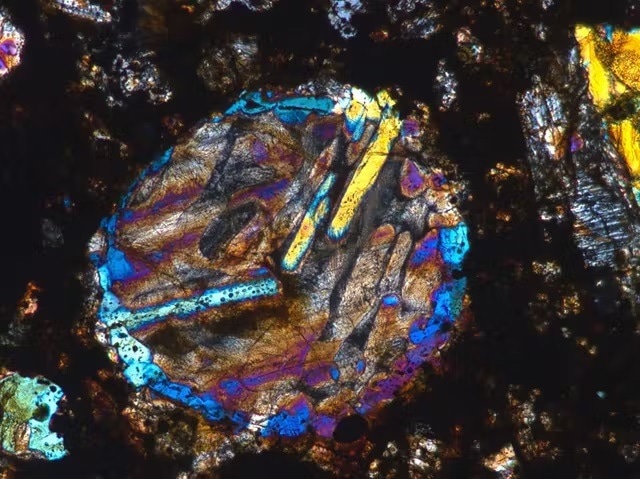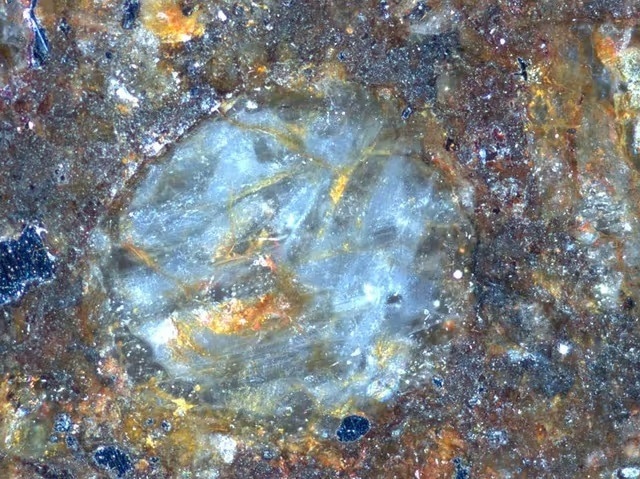The intelligent Axio Imager for Polarized Light Microscopy is the best option when a microscope that is simple to use, capable of handling difficult tasks and produces results of astounding quality is needed.
The microscope can be customized by selecting the coded, partially motorized, or fully motorized model.
Highlights
Confidence Thanks to Automatic Component Identification
The Automatic Component Recognition (ACR) of the microscope means that the settings can be relied upon at all times. Objectives are automatically recognized by every motorized stand. The Z-stand is fully motorized, and ACR can also recognize reflector modules. The Axio Imager automatically registers component exchanges.
Reliable Long-Term Imaging Thanks to Vibration-Free Design
Users can rely on the Axio Imager’s stability for time dependant measurements and high magnifications. A small, vibration-free unit that is separate from the rest of the stand has been designed for the nosepiece turret, z-guide, and stage carrier. With the help of this “stable cell,” the best measurement conditions can be achieved.

Image Credit: Carl Zeiss Raw Materials
Comfortable Operation Due to Extensive Functionality
- Simplify difficult processes: With the touchscreen at the stand or in the Docking Station, users have access to all motorized parts
- Save specific settings and quickly access them with a button press: With the help of ergonomically positioned control buttons with tactile surfaces, users can easily operate the focus drive
- Users can also control the polarized light microscopy system using a control panel that is completely independent of the stand: To produce repeatable and dependable results, the contrast- and light manager automatically chooses the ideal settings.
Methods
Conoscopy: Fast and Reliable Crystal Analysis with Polarized Light Microscope
Polarized light microscopy can simultaneously record orthoscopic and conoscopic image data. With the specially created Pol phototube, an additional intermediate image plane allows for simultaneous visibility of the object, crosshairs, and iris diaphragm.
This is also true for the upper limits of the conoscopic range down to a minimum crystal size of 10 µm, thanks to the iris diaphragm’s adjustability. The pre-centered Bertrand optics can be easily turned on and off. This enables the user to quickly switch between techniques, even when taking pictures or using a camera.
Consistent Measurement Performance
- Determination of strain measurements or optical path differences
- Simple measurements can be made with the help of the rotary, ball bearing-mounted stage’s 360° scale and 0.1° vernier (e.g., for measuring cleavage angles in minerals)
Compensators with Fixed Path Difference
- Quarter-wave plate λ/4
- Full-wave plate λ
- Full-wave plate λ, rotable +/−8°
There are numerous compensators available that cover the 0 to 30 λ measuring range.
Compensators with Variable Path Difference
- Wedge compensator 0–4 λ
- Measuring compensators
- Berek tilting compensator 0–30 λ
- Berek tilting compensator 0–5 λ
Axio Imager is open to many more methods, for example:
Application
Bar Olivine Chondrule in the Coolidge Meteorite
Sample: Dr Jutta Zipfel, Department of Meteorite Research, Senckenberg Research Museum, Frankfurt/Main, Germany

Transmitted-light - Brightfield, Objective: EC Plan-NEOFLUAR 10x/0.30 Pol. Image Credit: Carl Zeiss Raw Materials

Transmitted-light - Polarization, Objective: EC Plan-NEOFLUAR 10x/0.30 Pol. Image Credit: Carl Zeiss Raw Materials

Transmitted-light - Polarization with λ-Plate, Objective: EC Plan-NEOFLUAR 10x/0.30 Pol. Image Credit: Carl Zeiss Raw Materials

Reflected-light - Brightfield, Objective: EC Epiplan-NEOFLUAR 10x/0.25 Pol. Image Credit: Carl Zeiss Raw Materials

Reflected-light - Darkfield, Objective: EC Epiplan-NEOFLUAR 10x/0.25 Pol. Image Credit: Carl Zeiss Raw Materials

Reflected-light - Polarization, Objective: EC Epiplan-NEOFLUAR 10x/0.25 Pol. Image Credit: Carl Zeiss Raw Materials